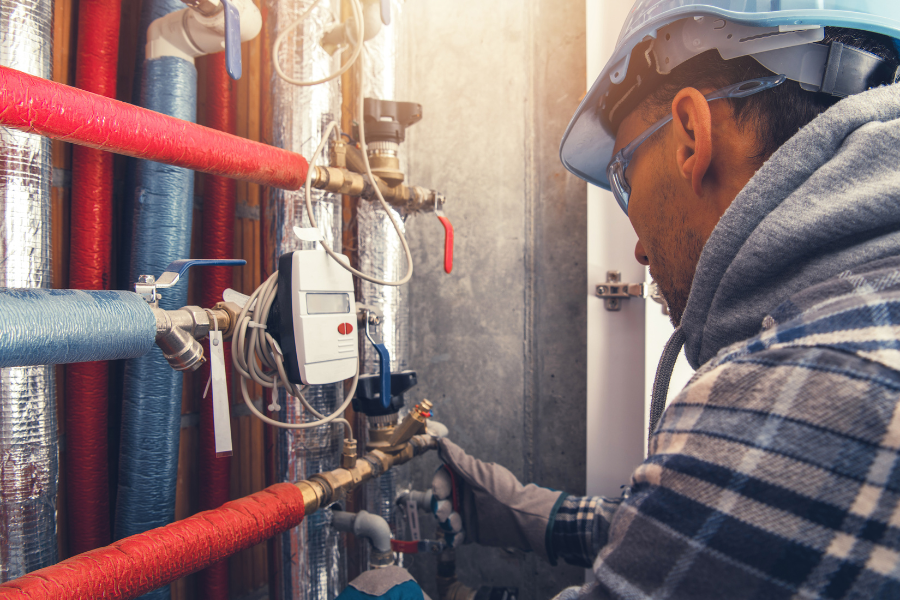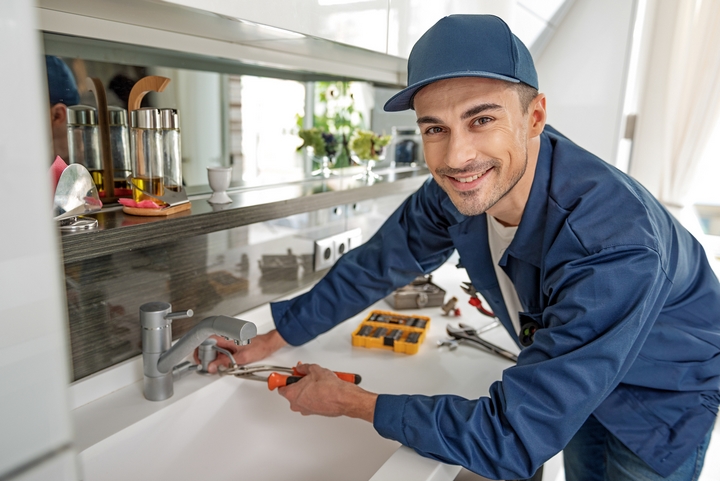The Way Plumbing is Transforming: Developments and Breakthroughs
The Way Plumbing is Transforming: Developments and Breakthroughs
Blog Article
This article which follows on the subject of 7 Plumbing Industry Trends You Need To Know is totally entertaining. Don't miss it.

Intro
The plumbing sector is going through a transformative phase driven by technical advancements and expanding problems for sustainability and effectiveness. This article explores emerging patterns and developments forming the future of plumbing.
Regulative Landscape
Governing structures play a vital function in shaping the fostering of plumbing developments, with requirements and codes controling everything from water effectiveness to product security. As technologies remain to advance, regulative bodies have to adjust to ensure customer security and environmental stewardship.
Future Expectation
The future of plumbing is characterized by proceeded technology and assimilation with various other markets such as IoT, renewable resource, and building automation. By welcoming sustainable practices, leveraging emerging technologies, and focusing on user-centric layout, the plumbing market is poised to resolve the progressing needs of society while decreasing its environmental impact.
Enhanced Reality in Plumbing
Augmented Reality (AR) technology is revolutionizing pipes by supplying service technicians with real-time aesthetic advice for fixing and fixing tasks. AR-enabled wise glasses or mobile applications overlay digital info onto the physical setting, assisting plumbing professionals imagine pipeline formats, recognize covert leaks, and execute repair services with precision.
Influence of 3D Printing
The arrival of 3D printing has actually presented new opportunities in manufacturing pipes components. From custom-made components to complex pipeline installations, 3D printing permits rapid prototyping and on-demand production, decreasing lead times and enabling higher modification in plumbing layout.
Health And Wellness Characteristics
In reaction to heightened worries for health and safety, pipes components are integrating features such as antimicrobial surfaces, touchless procedure, and self-cleaning mechanisms. These developments not only boost hygiene however also promote user comfort and benefit.
Hygiene-focused Components
Touchless faucets, self-sanitizing toilets, and antimicrobial surface areas are becoming significantly prevalent in household and business settings, lessening the threat of bacterium transmission and promoting a cleaner, healthier setting.
Water Top Quality Tracking
Developments in water high quality surveillance technologies enable house owners to check the purity and security of their water in real-time. Smart water high quality sensors can find pollutants, pH levels, and temperature level variants, equipping individuals to take positive steps to ensure water safety.
Remote Plumbing Providers
Remote diagnostics and online aid are transforming the way pipes services are delivered. With video clip conferencing and remote gain access to modern technologies, plumbings can troubleshoot issues, supply advice for DIY repair services, and even perform remote inspections, offering better accessibility and comfort to home owners.
Challenges and Opportunities
While pipes technologies hold immense guarantee, they likewise existing obstacles such as data privacy problems, regulatory conformity, and the demand for workforce training. Addressing these difficulties calls for collaboration between sector stakeholders and regulative bodies to guarantee secure and liable implementation of new innovations.
Smart Plumbing Systems
Including clever modern technology into plumbing systems makes it possible for remote surveillance, leak discovery, and automated upkeep. Smart sensing units and IoT (Net of Points) tools permit home owners and plumbing professionals to monitor water use and discover concerns in real-time, leading to a lot more effective resource monitoring and proactive maintenance.
Water Efficiency Solutions
With enhancing emphasis on water preservation, innovative solutions are being created to minimize water wastage in plumbing systems. High-efficiency fixtures, greywater recycling systems, and smart watering controllers are among the innovations helping consumers decrease their water footprint while keeping comfort and benefit.
Sustainable Materials
The shift towards sustainability includes plumbing products, with a growing choice for environment-friendly choices. Naturally degradable piping products, such as PEX (cross-linked polyethylene) and HDPE (high-density polyethylene), offer durability and resistance to rust without compromising environmental stability.
Anticipating Upkeep
Anticipating upkeep strategies leverage information analytics and machine learning algorithms to expect and stop pipes issues prior to they occur. By evaluating historical data and performance metrics, predictive upkeep formulas can identify patterns and abnormalities, making it possible for positive treatments to avoid pricey repair services and disturbances.
Verdict
Finally, the future of plumbing is specified by a convergence of innovation, sustainability, and user-centric style. By welcoming clever solutions, lasting materials, and positive maintenance methods, the pipes industry can boost effectiveness, promote safety, and add to a much more sustainable future.
The Future of Plumbing: Trends and Innovations to Watch
Introduction to Future Plumbing Trends
The future of plumbing is being shaped by several key factors, including technological advancements, environmental concerns, and changing consumer expectations. These factors are driving the development of new products, services, and practices that enhance the efficiency, sustainability, and convenience of plumbing systems.
Key Trends and Innovations in Plumbing
Smart Plumbing Systems: The integration of smart technology into plumbing systems is transforming the way we manage water usage and detect issues. Smart leak detectors, automated water shut-off valves, and smart faucets are just a few examples of how technology is enhancing plumbing systems. These devices provide real-time data and remote control capabilities, allowing homeowners to monitor and manage their water usage more effectively. Water Conservation and Efficiency: With increasing concerns about water scarcity, there is a growing emphasis on water conservation and efficiency. Innovations such as low-flow fixtures, greywater recycling systems, and rainwater harvesting are becoming more popular. Plumbers are adopting these technologies to help customers reduce their water consumption and save on utility bills. Sustainable Materials: The use of sustainable materials in plumbing systems is gaining traction. This includes the adoption of recyclable and biodegradable materials, as well as the use of non-toxic and eco-friendly products. Sustainable materials help reduce the environmental impact of plumbing systems and promote long-term sustainability. Energy-Efficient Water Heaters: Advances in water heating technology are leading to the development of more energy-efficient systems. Tankless water heaters, solar water heaters, and heat pump water heaters are becoming more prevalent. These systems offer significant energy savings and reduce the carbon footprint of homes and businesses. Trenchless Technology: Trenchless technology is revolutionizing the way plumbing repairs and installations are conducted. This method allows for the repair or replacement of pipes without extensive excavation, minimizing disruption and reducing costs. Techniques such as pipe bursting and cured-in-place pipe (CIPP) lining are gaining popularity. Health and Safety: The focus on health and safety is driving innovations in plumbing systems. Touchless faucets and fixtures, antimicrobial materials, and improved water filtration systems are being developed to enhance hygiene and protect public health. Plumbers are adopting these innovations to meet the growing demand for safer and healthier plumbing solutions. Remote Diagnostics and Monitoring: The ability to diagnose and monitor plumbing systems remotely is becoming increasingly important. Remote diagnostic tools and sensors allow plumbers to identify issues and perform maintenance without the need for on-site visits. This enhances efficiency and reduces the need for costly emergency repairs. Impact of Future Trends on the Plumbing Industry
Enhanced Efficiency: The adoption of smart technology and energy-efficient systems will enhance the efficiency of plumbing systems. This will lead to reduced water and energy consumption, lower utility bills, and improved performance. Sustainability: The focus on sustainability will drive the development and adoption of eco-friendly plumbing solutions. This will contribute to the conservation of natural resources, reduction of waste, and protection of the environment. Improved Customer Experience: The integration of technology and innovative solutions will improve the customer experience. Homeowners will have greater control over their plumbing systems, access to real-time data, and the ability to manage their water usage more effectively. Increased Demand for Skilled Plumbers: The adoption of new technologies and materials will require plumbers to acquire new skills and expertise. There will be an increased demand for skilled plumbers who are knowledgeable about the latest trends and innovations. Cost Savings: The use of efficient and sustainable plumbing solutions will result in cost savings for both homeowners and businesses. Reduced water and energy consumption, lower maintenance costs, and fewer emergency repairs will contribute to overall affordability. Preparing for the Future of Plumbing
Stay Informed: Keep up-to-date with the latest trends and innovations in the plumbing industry. Attend industry conferences, participate in training programs, and engage with manufacturers to stay informed. Invest in Training: Ensure that you and your team are trained in the latest technologies and installation techniques. This will enable you to offer cutting-edge solutions to your customers and stay competitive in the market. Promote Sustainable Solutions: Highlight the benefits of eco-friendly and energy-efficient plumbing solutions to your customers. Educate them about the advantages of adopting sustainable practices and products. Leverage Technology: Embrace smart technology and remote diagnostic tools to enhance your services. Offer remote monitoring and maintenance options to provide added convenience and value to your customers. Collaborate with Manufacturers: Partner with manufacturers of innovative plumbing products to gain access to the latest solutions and technical support. This can also provide opportunities for joint marketing efforts. Focus on Customer Education: Educate your customers about the benefits and functionality of new plumbing technologies. Provide guidance on how to use smart systems and maintain sustainable plumbing solutions. Conclusion
The future of plumbing is being shaped by exciting trends and innovations that promise to enhance efficiency, sustainability, and convenience. By staying informed and embracing these changes, plumbers can provide superior services to their customers and contribute to a more sustainable future. The adoption of smart technology, sustainable materials, and energy-efficient systems will drive the evolution of the plumbing industry, creating new opportunities and challenges. By preparing for the future, plumbers can ensure their success in a rapidly changing market.

I ran across that blog post on while surfing the web. Are you aware of somebody who is curious about The Future of Plumbing: Trends and Innovations to Watch? Take a moment to promote it. Kudos for your time. Kindly stop by our website back soon.
This Site Report this page